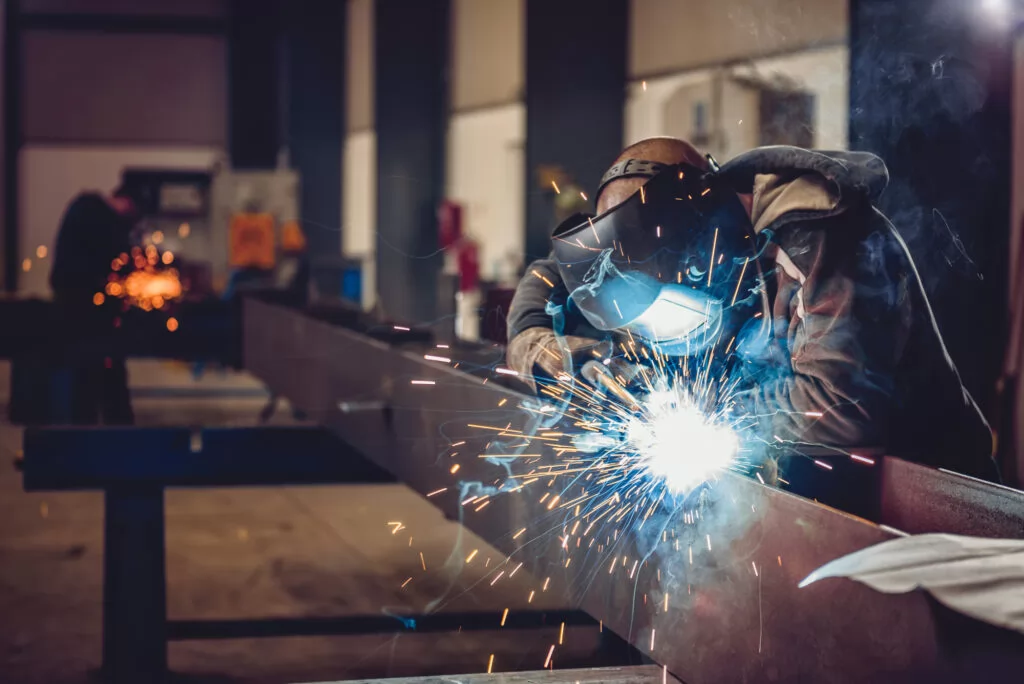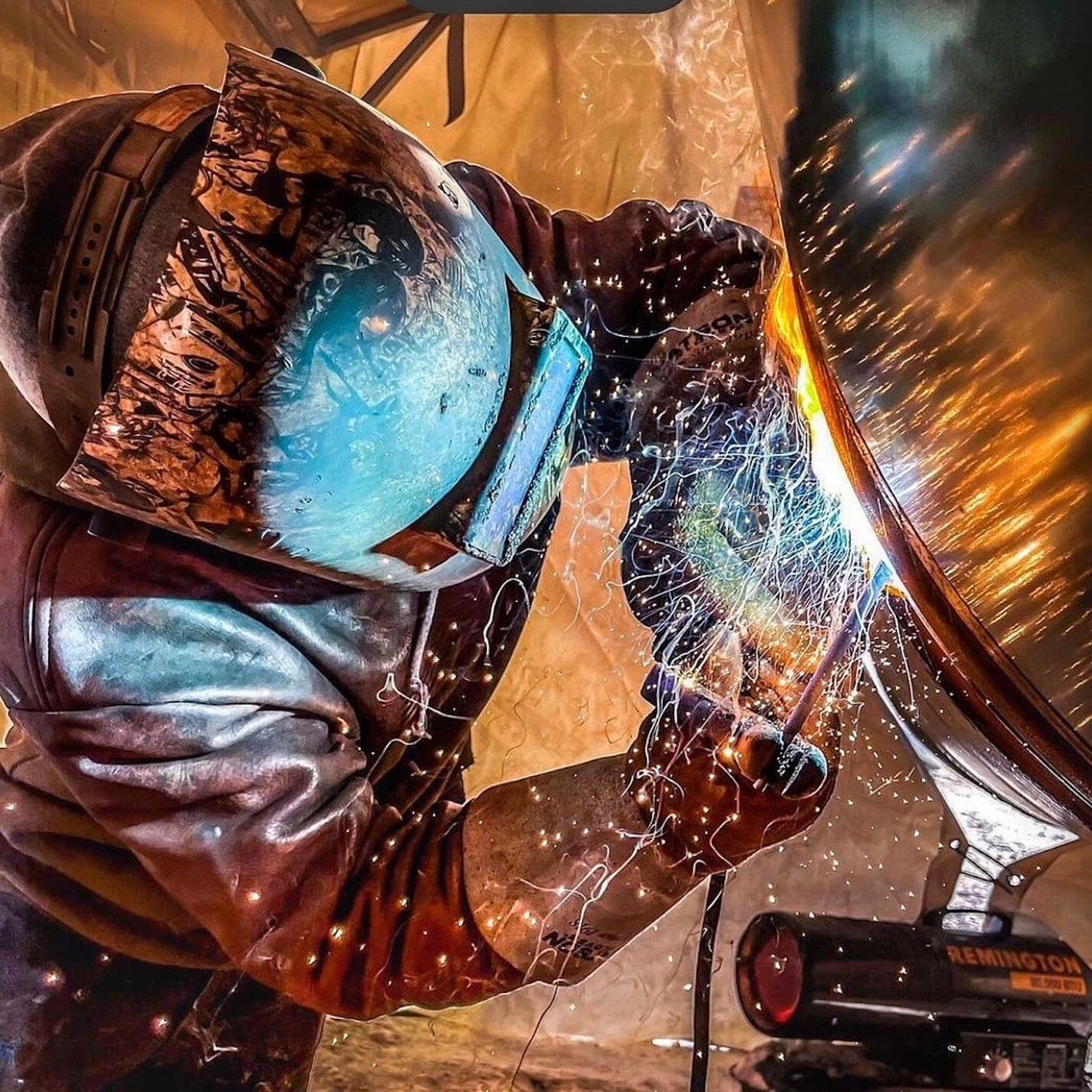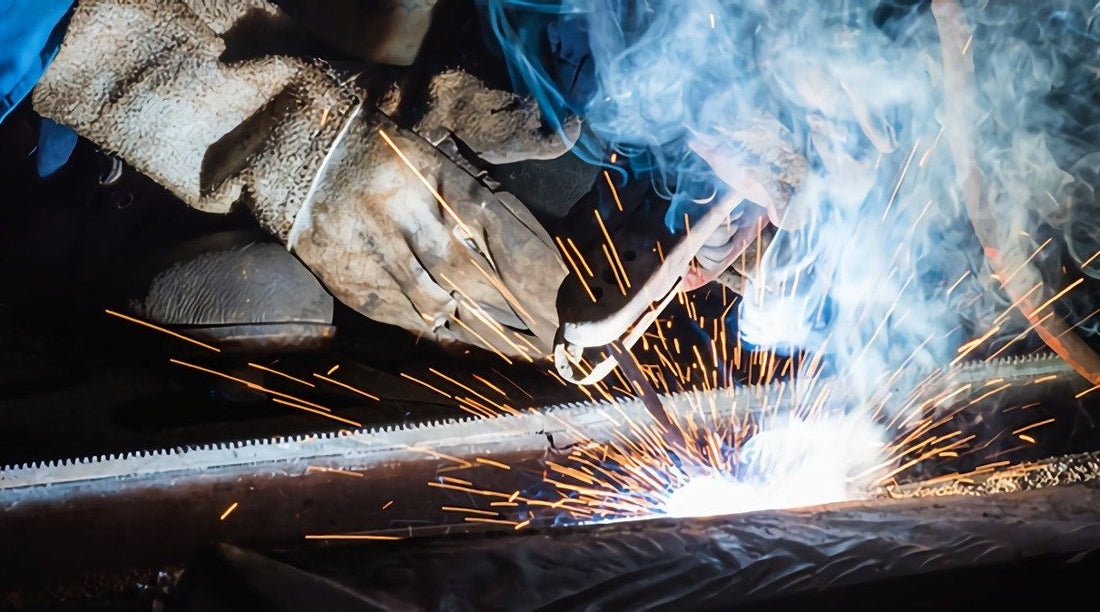Typical Welding Fixing Issues and Exactly How to Address Them Successfully
Welding repair work frequently encounter a variety of concerns that can threaten the stability of the last product. Typical problems consist of poor infiltration, porosity, and misalignment, amongst others. Each defect provides special difficulties that require details approaches for resolution. Understanding these problems is crucial for welders aiming to boost their results and abilities. This conversation will discover these common welding repair concerns and reliable approaches to address them.
Inadequate Infiltration
Poor penetration takes place when the weld steel stops working to fully fuse with the base product, leading to weak joints and possible architectural failures. This concern often originates from not enough warmth input, inaccurate electrode angle, or incorrect welding speed. Welders may run into inadequate penetration due to a mistake of the needed specifications for a details material density or type. In addition, contamination on the base material's surface area can impede effective bonding, aggravating the trouble. To attend to poor infiltration, welders must ensure appropriate setups on their equipment and maintain a clean job surface. Normal inspection of welds is recommended to determine any deficiencies early, permitting for prompt improvements and the avoidance of jeopardized structural integrity in welded assemblies.
Porosity
Porosity is a common defect in bonded joints that materializes as tiny gas bubbles entraped within the weld steel. This flaw can jeopardize the integrity of the weld, resulting in reduced stamina and potential failure under anxiety. Montana Mobile Welding and Repair Belgrade. Porosity typically emerges from contamination, moisture, or incorrect welding techniques, which permit gases to leave right into the liquified weld swimming pool. To resolve porosity, welders should guarantee proper surface area preparation, preserve a tidy workplace, and make use of suitable welding parameters. Additionally, picking the right filler product and shielding gas can minimize gas entrapment. Normal evaluation and testing of welds can assist determine porosity early, assuring prompt restorative activities are taken, thereby maintaining the high quality and reliability of the bonded structure
Imbalance
Misalignment in welding can emerge from different variables, including incorrect setup and thermal development. Comprehending the origin is important for efficient resolution. A number of correction techniques are readily available to straighten elements and ensure structural integrity.
Sources of Imbalance
Welding misalignment typically originates from a selection of underlying issues that can endanger architectural stability. One primary cause is inappropriate fit-up of parts before welding, which can lead to voids and unequal surfaces. Variants in thermal development throughout the welding process can likewise cause distortion, specifically if the materials being signed up with have different coefficients of growth. Furthermore, inadequate clamping and fixturing may fall short to hold parts securely in position, bring about activity during welding. Badly maintained tools, including welding equipments and devices, might present inconsistencies in the weld bead, additional adding to imbalance. Driver error, stemming from inadequate training or experience, can also play a significant duty in creating misaligned welds.

Adjustment Techniques Readily Available
Dealing with imbalance successfully requires a mix of corrective strategies customized to the details problems available. One common method is making use of fixtures or jigs to hold parts in the proper position throughout welding, guaranteeing constant positioning. In addition, pre-heating the products can help reduce distortion and boost fit-up. For significant imbalance, mechanical realignment strategies, such as using hydraulic jacks or clamps, can be used to remedy the position before welding. Post-weld heat therapy may also be necessary to alleviate tensions triggered by imbalance. Cautious assessment and adjustment throughout the configuration phase can avoid imbalance issues from ending up being significant issues, promoting a smoother welding procedure and enhancing general architectural honesty.
Distortion
Distortion is a typical challenge in welding that can occur from different variables, consisting of unequal home heating and air conditioning. Recognizing the root causes of distortion is essential for executing effective avoidance strategies. Addressing this concern not just improves structural honesty yet likewise improves the total top quality of the weld.
Reasons for Distortion
When based on the intense warmth of welding, products frequently undergo adjustments that can bring about distortion. This sensation largely occurs from thermal expansion and contraction during the welding procedure. As the weld location warms up, the material expands; upon air conditioning, it gets, which can produce inner anxieties. Furthermore, unequal heating throughout a workpiece can worsen these tensions, leading to warping or flexing. The type of material additionally plays a significant role; metals with differing thermal conductivity and coefficients of expansion may respond in different ways, causing unforeseeable distortions. Poor joint style and inadequate fixturing can add to imbalance throughout welding, increasing the probability of distortion. Recognizing these reasons is necessary for efficient welding repair work and prevention techniques.
Prevention Techniques
Efficient prevention techniques for distortion throughout welding emphasis on controlling warmth input and ensuring proper joint style. Maintaining a regular heat input assists to minimize thermal expansion and contraction, which can bring about distortion. Using techniques such as pre-heating the work surface can additionally decrease the temperature gradient, promoting consistent heating. Furthermore, picking proper joint designs, such as T-joints or lap joints, can enhance stability and reduce anxiety focus. Implementing appropriate fixturing to secure the workpieces in area better aids in maintaining alignment throughout the welding process. Staggered welding sequences can distribute heat extra uniformly, stopping localized distortion. By using these techniques, welders can substantially decrease the likelihood of distortion and boost the overall quality of their welds.
Breaking
Splitting is a typical concern experienced in welding fixings, often arising from various factors such as incorrect cooling rates, product option, or insufficient joint prep work. click this The event of fractures can substantially jeopardize the stability of the weld, leading to possible failings during operation. To address this issue, welders have to initially evaluate the root causes, guaranteeing that products work and suitably chosen for the certain application. In addition, regulating the cooling price throughout the welding process is necessary; rapid cooling can cause stress and anxiety and result in splitting. Proper joint design and prep work likewise add to lessening the threat. Applying these techniques can improve weld high quality and longevity, ultimately lowering the chance of breaking in completed weldments.

Insufficient Blend
A considerable issue in welding repair services is insufficient combination, which takes place when the weld metal does not effectively bond with the base product or previous weld passes - Montana Mobile Welding and Repair Welding. This defect can lead to weaknesses in the joint, possibly compromising the honesty of the bonded framework. Factors adding to insufficient fusion consist of not enough warmth input, incorrect welding method, and contamination of the surface areas being joined. To resolve this issue efficiently, welders need to guarantee appropriate pre-weld cleaning and surface area prep work, along with readjust their welding criteria to achieve ample penetration and blend. Normal examination during the welding process can also help determine incomplete blend early, permitting timely rehabilitative procedures to enhance the overall top quality of the weld
Overheating
While welding repair work can improve architectural integrity, overheating offers a substantial challenge that can lead to material destruction. Too much warmth during welding can change the mechanical residential or commercial properties of steels, leading to decreased toughness, increased brittleness, and bending. This phenomenon is specifically critical in high-stress flashback arrestor applications where architectural dependability is paramount. Recognizing overheating can include visual evaluations for discoloration or distortion, in addition to keeping an eye on temperature level throughout the welding process. To minimize the risks related to overheating, welders must utilize proper strategies, such as managing warmth input, adjusting travel speed, and making use of appropriate filler products. In addition, implementing pre- and post-weld heat treatments can assist recover material properties and improve the overall top quality of the fixing, making sure long-term performance and security.
Frequently Asked Inquiries
What Are the Typical Indicators of a Welding Defect?

How Can I Check My Welds for Quality?
To evaluate welds for quality, one can use aesthetic inspections, ultrasonic screening, and radiographic approaches. Each technique ensures structural integrity, recognizes issues, and validates adherence to defined criteria, ultimately improving the reliability of the welded joints.
What Safety Precautions Should I Take While Welding?
When welding, one must prioritize security by putting on proper personal safety tools, making certain proper ventilation, safeguarding flammable products away, preserving a tidy work space, and being aware of environments to avoid injuries and mishaps.
Can I Fix a Weld Without Renovating the Entire Joint?
Repairing a weld without remodeling the entire joint is feasible, depending upon the damages (Montana Mobile Welding and Repair). Methods such as grinding, adding filler product, or using a welding procedure can efficiently deal with specific imperfections while maintaining the surrounding structure
What Equipment Are Necessary for Reliable Welding Fixes?
Essential devices for effective welding repairs include a welding device, wire brush, grinder, safety equipment, clamps, and filler products. Each device plays an essential role in making sure quality and security during the repair work process. Porosity usually arises from contamination, wetness, or inappropriate welding methods, which allow gases to run away into the molten weld swimming pool. Improperly maintained devices, including welding devices and devices, may present variances in the weld grain, additional adding to imbalance. When subjected to the intense warmth of welding, products usually go through changes that can lead to distortion. Cracking is a common problem run into in welding fixings, often resulting from numerous aspects such as metal arc improper cooling rates, material choice, or inadequate joint prep work. A substantial problem in welding repair services is incomplete blend, which takes place when the weld metal does not appropriately bond with the base material or previous weld passes.